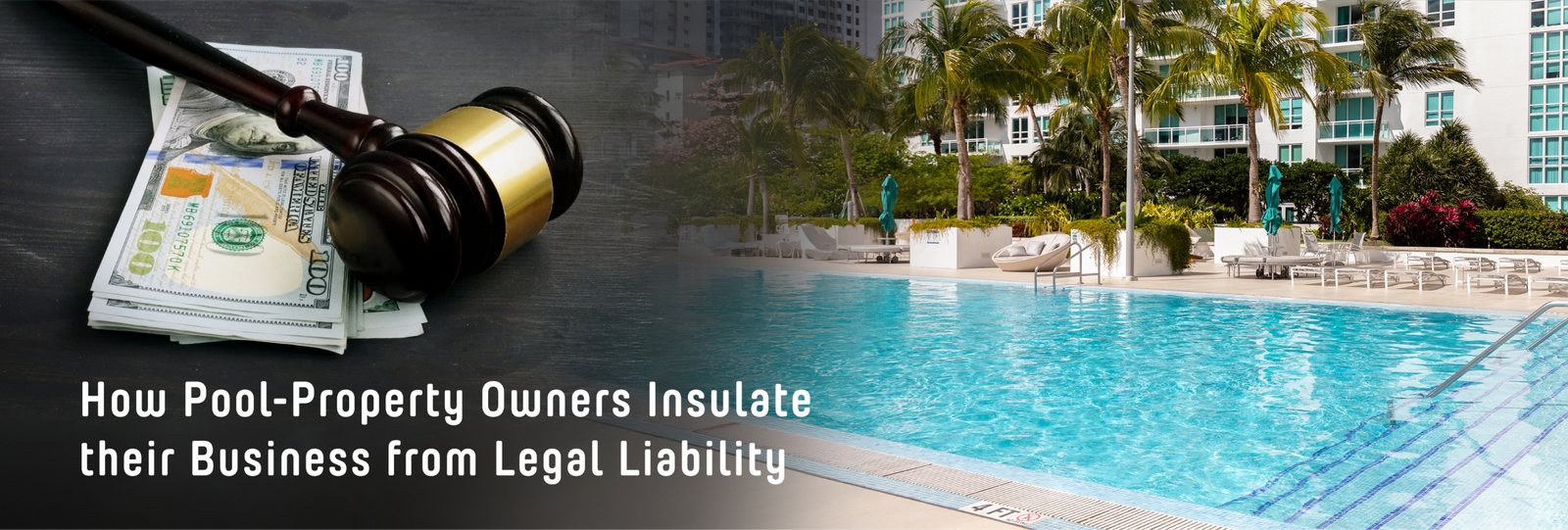
In February 2024, Brittain Properties, a property management company in Myrtle Beach, South Carolina, paid out a $26 million legal settlement to a family whose child suffered chemical burns from swimming in an overchlorinated pool at their Caribbean Resort and Villas. The business cost was severe, both in financial terms and in long-term reputational damage to the Brittain Properties brand.
"I am relieved that justice has been served for my son, who endured unimaginable pain and suffering. My hope is that this serves as a wake-up call for all resorts to prioritize the safety of their guests, especially children, so that no other family has to endure such a horrifying ordeal."
The toddler's mother, following the settlement in February 2024

How could this nightmare scenario have occurred at a luxury resort with marquee pools under the care of well-paid, certified, pool maintenance staff? Did resort staff intentionally over-chemical their pools? Did gallons of chlorine accidentally spill into the water? Did the automated dosing system malfunction? Was this the work of a disgruntled employee? And most importantly, why didn’t property managers know about the toxic pool conditions before guests were harmed?
To answer these questions, we turned to Richard Falk, an industry authority on recreational water chemistry, advisor to the CDC, contributing member on the Council for the Model Aquatic Health Code, published scientist, and chief technology officer at WaterGuru in Silicon Valley. WaterGuru’s state-of-the-art SENSE is the leading water-health monitoring and intelligently-guided dosing solution used by thousands of hotels and property management companies, swim schools, country clubs, municipalities, and summer camps to elevate guest experience and mitigate liability exposure.
The following interview by Jeff Siegel, CMO of WaterGuru, asks Richard to demystify the situation and guide property owners on elevating guest experience and mitigating pool-related liabilities. In particular, questions often raised by property owners include:
How at risk is their pool-property business? What can be done to mitigate financial risks and reputational damage? Is hiring certified, trained pool maintenance staff sufficient to mitigate liability?

Richard, let’s start by delving into what happened at Brittain Properties. $26 million is a sizeable financial penalty that few pool-property owners could absorb without filing bankruptcy. Is this a rare, one-off situation, or do property owners and managers need to be concerned about their own exposure? And how under-reported is this problem?

What happened at Brittain Properties Caribbean Beach Resort isn’t a one-off situation. According to one CDC study, 11.9% of routine inspections found chlorine concentration violations and 78.9% had at least one violation with a whopping 12.3% resulting in immediate closure. It’s a widespread, serious problem.
That explains why hundreds of commercial pool-properties each year quietly settle lawsuits from guests attributing health issues to chemically unsafe pool exposure, rarely making the news to prevent reputational damage. What’s the main cause of these undesired problems? Is it negligence or poorly trained staff?

“When dealing with overchlorinated pool conditions like those at Brittain Properties, standard test strips, spin disks, and liquid test kits simply aren’t designed to detect such high-chlorine levels.”
Nevertheless, that’s what pool maintenance staff rely on every day. When chlorine levels exceed chemical test upper measurement limits, a common occurrence, these widely relied upon tests using DPD chemical dyes begin to fade out around 10 PPM. When a hotel’s pool chlorine levels reach dangerous levels like 15 or 20 PPM; maintenance staff are operating completely in the dark. It’s the classic case of - you can’t manage what you can’t measure!
You’re saying that certified pool maintenance staff, even those with decades of experience, aren’t able to identify high-chlorine conditions beyond 10 PPM due to inadequate testing tools? That’s astonishing and would be disconcerting to any property owner believing trained staff to use effective tools in their job. Are pool maintenance staff aware of these limitations? Or is everyone in the dark here? Clearly this represents a high-liability risk.
“Should corporate risk departments and legal counsel be on high-alert? How often are pools perched on this overchlorinated precipice?”

Jeff, people don’t know what they don’t know. Given these imperfections, what could be done technically speaking, is diluting a pool water sample with unchlorinated water and rereading the measurement result; but this requires staff to have advance knowledge of the problem. No one does that. Another test alternative involves using a premium-grade count-the-drops FAS-DPD test kit and hopefully noticing the “flash of pink” when adding DPD powder. Few if any pool operators would do this given the high expense, complexity, and time-consuming effort required.
“There’s a strong need to ditch such outdated, error-prone technology.”
Yet this is how staff gets certification training, on problematic tools?

Pool operator training covers “False DPD Readings”, recommending confirmation of a zero reading by adding more DPD dye to the sample to detect a flash of pink when the chlorine is extremely high. But no method exists for situations where high chlorine levels appear normal.
In fact, on the Taylor Technologies website (chemical reagent manufacturer) this limitation of high-chlorine detection using DPD dye-based testing, the basis for most test tools, is clearly documented, but few professionals are aware of this, or even if aware, what to do about it. The good news is that the latest innovation in chemistry measurement technology overcomes these old-world, outdated limitations. However, there is low, albeit growing awareness by maintenance depts of the latest developments from Silicon Valley for overcoming these serious shortcomings.
“Property Managers and Facilities Directors need to take the lead in driving adoption of these newest tools to empower their maintenance staff and reduce legal exposure. Otherwise, the status quo will prevail.”
The liability risk is extremely high for properties with hot tubs, as these small bodies of water are frequently and easily overchlorinated with normal dosage measured in teaspoons, not cups. While effort goes into protecting against bacterial growth, which is good, overchlorination is not. High-chlorine conditions create bather discomfort, and worse, skin and eye damaging exposure.
“Testing hourly throughout the day isn’t overkill during periods of high bather load where chlorine levels can rapidly drop to zero and be overdosed.”
This explains why some property owners have side-stepped hot tubs as an amenity despite their popularity. Avoiding a huge liability risk factor is a rational response in the absence of confidence in staff’s ability to ensure a safe guest environment. Risk mitigation is a priority in property management for good reason.
“A $26M legal settlement, or even half that amount, would bankrupt most firms, far exceeding the limits of their corporate risk policies.”
All because staff relied on obsolete chemistry tools putting swimmers at risk?

That’s correct, but it’s even worse than that Jeff.
It sounds pretty bad already, so how can it be worse? And help us understand something – it’s well known that chlorine levels precipitously drop with high bather load and intense UV rays. But what causes chlorine levels to rise in the first place?

Yes, that is the mystery to unravel here. How does this dangerous condition occur? First-off, many commercial pools found in hotel/motel properties, HOAs, and multifamily living are equipped with manually-set chlorine dispensing systems which while convenient, require frequent adjustment as conditions change. Such systems include Trichlor and Cal-Hypo in feeder systems, saltwater chlorine generators, and peristaltic pumps for chlorinating liquid.
It’s generally understood that as bather load increases, more chlorine is needed to prevent bacterial levels from rising to dangerous levels. What’s less known is cloudy days blocking the UV in sunlight diminishes chlorine consumption creating an imbalance.
“On these days, manually preset dosing systems predictably overchlorinate pools. Unless detected early on, traditional testing tools falsely report low or even zero chlorine, compounding the problem.”
This is true of saltwater chlorine generator pools as well, particularly in the wintertime.
What about automated control systems based on ORP technology? While expensive, are they more effective risk-mitigation tools?

ORP sensors are useful for short-term process control but useless for absolute chlorine measurement for the simple reason they don’t measure chlorine concentration at all. They are measuring a thermodynamic redox value where ORP has multiple interferences, fouling and drifting.
Nearly every state mandates commercial pool chlorine testing be performed several times daily. Even the ten states explicitly allowing for ORP do so only as a supplement, never replacing chemical reagent tests. Experienced pool maintainers are aware of these deficiencies because they’re the ones burdened with regularly recalibrating ORP sensors with a “setpoint”, a time-consuming and complex task that’s irregularly performed.
As for high-chlorine detection, ORP sensors are dumb sensors so when a pool becomes highly chlorinated for any reason including staff shocking the pool, the ORP sensor will continue controlling chlorine output to the last “setpoint”, not adapting to what is needed.

Inconvenient Truth: 98% of maintenance staff rely on obsolete tools incapable of detecting dangerously-high chemical conditions. The other 2% rely on WaterGuru SENSE.
From what you describe, both manually set and automated chemical dispensing systems are contributing factors to overchlorinated pools. And since water clarity is visually deceptive, an overchlorinated pool goes undetected by the human eye unless it’s the eye of a swimmer burning underwater. Are there other causes of overchlorination in commercial pools?

Another cause, one we haven’t touched on yet, is attributed to pool maintenance contractors intentionally over-chlorinating to lower their risk of costly remediation of a green algae pool.
That’s the classic quandary - optimize for swimmer comfort or killing maximum bacteria. But we haven’t addressed the question - why are certified pool staff so easily fooled into adding chlorine when they shouldn’t? What does a faulty test result look like? Do these tools peak out at their limit, reporting for example a maximum of 10 PPM, when in fact the levels are 15 or 20 PPM?

If widely relied upon test kits peaked at their upper limit, the problem would be less dangerous. At least a red flag would be raised, but that’s not what happens.
“Instead, upon hitting their limit, the DPD testing reagent dye further reacts with chlorine, reversing course to produce a bleached out colorless measurement result. This is misinterpreted by staff as zero chlorine.”
What does any diligent maintenance person do in that situation? They dutifully add more chlorine to an over-chlorinated body of water creating a caustic human swimming environment, and the perfect storm for lawsuits.
This brings us to the burning question on the minds of property managers reading this.
“With so many ways for over-chlorination to occur, often going undetected, what can pool-property owners do to lower their business risk?”

The answer is to modernize pool maintenance operations, stepping into the 21st century by replacing inadequate test tools with a technologically patented system that eliminates test and dosing errors. By integrating multiple technologies including WiFi, intelligently-guided dosing, optical color sensors and new chemical-reagent materials fabrication, a complete rethink has led to solving an industry-wide problem.
“Had Brittain Properties installed this state-of-the-art pool-health system, for under $1,000, management would have prevented the situation from getting out of control.”
There’s no excuse for not using the latest technology when it’s so affordable. And auto-logging test data removes the human error from the picture entirely.
The WaterGuru SENSE technology is also being incorporated into the next generation of factory-built hot tubs beginning late 2025. The hot tub industry understands the seriousness of these health risks. Commercial property owners, likewise, should take their unprotected liability exposure seriously. Juries don’t look kindly on erroneous chemical testing when plaintiffs rightly claim the technology exists to eliminate these blind spots.
“In other words, ignorance or good intentions are no protection against lawsuits.”
That sounds harsh, but the courts have ruled with many firms mistakenly believing their pool operations were well managed. So, maintenance staff are living each day with limitations they don’t understand?

Exactly. It really is the perfect storm.
“But with a pool-health system that reveals the truth, even at the highest chlorine levels, property owner liability becomes contained.”



Subscribe to WaterGuru’s Pool-AI newsletter
for news on smarter pool management.
